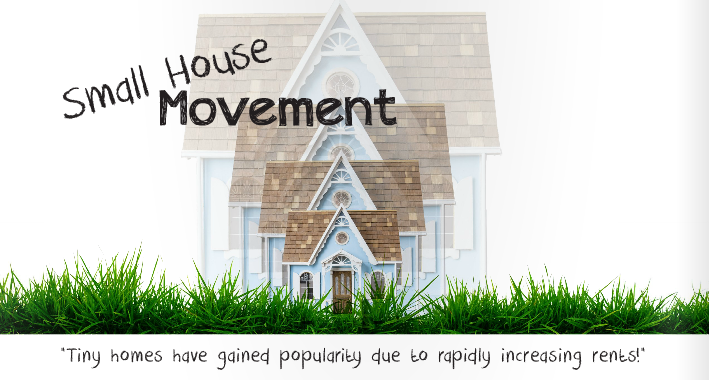
Know an Incredible Woman Preserving the
Quality of Life During COVID-19?
Submit your story today!
Read More

Consulting & Branding Opportunities
Grant your business access to insider,
proven knowledge to improve the quality of your procured
services and maximize business performance.

If you need D&I
Contact Us!
A Team Focused on Bring Diversity and Inclusion to Every Level
Learn More

#1 Top Real Estate Influencer
Desiree Patno
Diversity & Inclusion, Quality of Life, Know the Rules of the Game ®
Your Next Event
Grow Your Business
NAWRB: An SBA Resource
NAWRB is listed as a women-owned business resource for the SBA.
Check It Out
NAWRB Aging Population
Help Protect Elders
from Financial Abuse
Over $36.5 billion a year is lost annually in the U.S.
Prevent Financial Abuse

Women's Homeownership:
Dream. Stability. Sanctuary.
Life often presents us
with unplanned disruptions.

AI Technology
with
a Human Touch
Is
The Perfect Balance


NAWRB Women's Global Resource Center
A women’s depository for vendors & clients to grow their diverse spend & increase women’s employment at all levels within the housing ecosystem.

Monthly Archives: February 2014
Small House Movement
A housing trend has gained prominence across the nation as a solution to looming issues such as foreclosures, skyrocketing rents in urban cities, and increased debt. The trend, known as the Small House Movement, refers to the switch from traditional homes to smaller, minimalist homes typically under 400 square feet. These homes are usually referred to as ‘tiny homes.’ Although the percentage of foreclosures has decreased since the recession, there were still 1.4 million foreclosures in the United States in 2013. The Small House Movement has allowed former homeowners to escape a future of hefty mortgage payments and regain their independence.
High-Priced Rents
Tiny homes have also gained popularity due to rapidly increasing rents. A recent study regarding New York rental prices revealed that rent in Brooklyn and Manhattan is at a five-year peak with an average rental price at $4,008 in Manhattan and $3,209 in Brooklyn. Other dense, urban areas are experiencing similar growth. San Francisco, for example, is no stranger to escalating rents. Rent in San Francisco has now become three times more than the national average. A growing amount of people are finding it impossible to not only pay their rent but find affordable housing in cities nationwide.
Sleek and Functional Designs
The Small House Movement combats the rent issue with micro-apartments in major cities although the movement is also comprised of tiny homes that have the option of attached wheels for mobility. The housing layout of both designs use innovative techniques to maximize space and include many of the same components of a traditional home such as a bedroom, bathroom, kitchen, dining room, and den. Architects utilize everything imaginable for storage so that clutter is avoided and a spacious feel is added. Most notably, Hong Kong architect Gary Chang has transformed his 344 square foot apartment into a spacious home with luxurious amenities such as a wet bar, steam room, and library. His secret? Chang uses a combination of hidden sliding doors and compartments that transforms a simple area into nearly any type of room desired. Other design techniques include stairs that double as individual drawers for storage, vanity mirrors with storage space that pop out of floorboards, and tables that rise up and rest against the wall for impromptu shelves. Although many people that participate in small space living use it as their main form of housing, tiny homes have also become a trend among those who want spare offices, in-law quarters, or simply a spare room for guests.

Tiny vs. Traditional
Micro-apartments aside, the average cost of a tiny home is approximately $23,000 if built by the owner rather than a contractor. In contrast, the average price of a home at the end of 2013 was $321,200. However, the tiny home price can dramatically reduce if the consumer chooses to build a tiny home out of reclaimed materials. Although this may take more time, many people are more than willing to wait. Some companies will also provide the ‘shells’ of tiny homes in addition to holding workshops on how to build a tiny home. It is a win-win for both parties since consumers can cut costs by building their own homes and companies can spare their time and labor by transferring it onto the consumer. However, the price can easily skyrocket up to $80,000 if a contractor builds the home in addition to any add-ons such as upscale appliances and materials.
It is important to note that even a hefty start-up cost will reap future benefits due to a lack of mortgage and minimal maintenance. An eliminated mortgage allows people to focus on paying their debts and saving money which is the reason why many choose small space living in the first place. With all of their newfound savings, a growing number of those living in tiny homes have either quit their jobs for more fulfilling occupations or switched from full-time to part-time in order to pursue other passions. With a tiny home comes renewed freedom for many.
Nevertheless, the small space lifestyle is not meant for everyone. A tiny home or micro-apartment can typically house a maximum of two people. In addition, living in small quarters can lose its appeal over time for some. So who does small space living attract? People who live in tiny homes range from retirees who want to downsize, those looking for more affordable living, and people who want to reduce their debt and/or carbon footprint.
Concerns
People who want to build a tiny home may run into multiple issues, depending on their county. Regions differ in the amount of square footage that requires a building permit. Plumbing and electrical permits may also be required. Some builders can bypass a building permit requirement by constructing their home on a trailer platform which makes it a vehicle. In addition to permits, tiny homes may clash with local zoning codes. It is important to meet with local government to figure out the specific laws for the chosen county.
In addition, property prices and zoning codes are prominent issues. This can be non-existent if one simply situates a tiny home on existing property such as a backyard. However, many people forgo traditional housing in lieu of solely living in a tiny home. Some states have small, affordable plots of land available for rent with little restrictions. Other states have costly land that negates the savings a tiny home provides. To solve this problem, people have taken to living in remote areas, the property of friends, or even RV parks.
Novelty or Permanent Fixture?
In 2012, the growing Small House Movement gained considerable coverage when the mayor of New York City, Michael Bloomberg, announced a design competition regarding micro-apartments. At the time, New York City reported 1.8 million households that contained one to two persons. Small households are the ideal profile for micro-apartments. Much like tiny houses, micro-apartments use all of the same sleek and modern design techniques without the hassle of having to locate a property. Mayor Bloomberg’s competition—adAPT NYC—requested proposals for the design, operation, and construction of a micro-unit apartment building in New York City. The building would be constructed on a city-owned site. Bloomberg created the competition in order to keep up with New York City’s growing housing demands.
Regarding the competition, the New York City Department of Housing Preservation and Development (HPD) Commissioner Matthew Wambua stated, “The remarkable number of high-quality responses to the adapt NYC RFP validates the position that developing micro-unit living is both financially and physically feasible in the New York City landscape.”
Similarly, expensive housing markets nationwide have followed in New York’s footsteps with micro-apartment developments. Some of the housing markets with current micro-apartment developments include Cleveland, San Francisco, Los Angeles, and Boston.
The fact that micro-apartments and tiny homes have had an unwavering presence for years, shows this trend may be more than just a niche. Rather, these alternative living solutions have proven essential to evolving housing markets and population growth. From those who are craving simplified lifestyles, to those seeking affordable housing and beyond, the small house movement is clearly making a name for itself.

To view the original article please see our magazine titled “Trending Now” Vol 3, Issue 4 by Clicking Here
NAWRB Announces Roaring Twenty Annual Award Winners Featuring Industry Leaders
IRVINE, CA – The National Association of Women in Real Estate Business (NAWRB) is proud to announce our 2014 annual award winners highlighting outstanding women in the housing economy. This year we feature eleven extraordinary women in the featured categories, and for the first year we have co-winners as both nominee’s contributions to their community were immeasurable.
The list of awardees is as follows:
The Flapper: Cayce Macias
The Talkie: Tami Bonnell
The Gatsby: Brigitte Respaut Clement
The Spirit of St. Louis: Amy Brandt
The Chanel: Donna Nazir
The Chrysler: Debbie Oliver
The Disney: Nancy Welsh
The Gershwin: Patricia Arvielo
The Charleston: Monica Vacas & Vandana Chima Bhalla
The Women’s Voice Award: Barbara Kasoff
We recognize these outstanding women in the Housing Economy for their professional achievements. Each award is in keeping with the spirit of the 1920’s, pulling inspiration from this diverse and dynamic decade, as it is a distinct representation of the women in this industry. Each award name was featured after a unique individual, theme, or event that transpired during this period of time.
We will be spotlighting each woman in our Roaring Twenty Spread along with this year’s nine leading ladies, which will be featured in our upcoming Double Issue of N Magazine.
NAWRB is the most visible women’s trade association specializing in the Housing Economy. As the only provider of Women-Owned Business (WOB) and Minority Women-Owned Business (MWOB) certifications specific to real estate, NAWRB is dedicated to the access and advocacy of professional women and women business owners Specializing in the Housing Economy, SHE is Changing Real Estate™.
2015 NAWRB Conference Roaring Twenty Awards
 Login
Login






